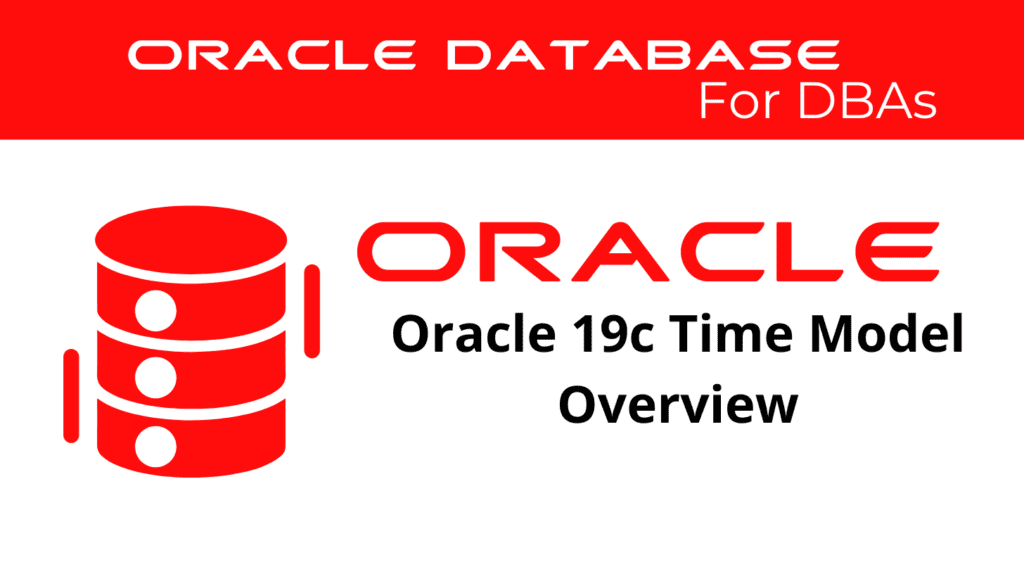
The Oracle 19c Time Model provides a comprehensive framework for understanding and optimizing database performance. It breaks down database activities into time statistics, allowing database administrators (DBAs) to pinpoint performance bottlenecks and enhance efficiency. This blog will delve into the Oracle Time Model, exploring its key components and how it can be leveraged for effective performance analysis. Our focus will be on understanding time statistics, performance metrics, and efficiency indicators.
Understanding the Oracle Time Model
The Oracle Time Model is a critical tool for DBAs aiming to optimize database performance. It provides a detailed breakdown of how the database spends its time on various operations. The primary components of the Oracle Time Model include:
- DB Time: Represents the total time spent by user sessions in the database, including wait times.
- CPU Time: Measures the amount of time the CPU is actively working on database tasks.
- Wait Time: Captures the time spent waiting for resources, such as I/O operations, locks, and latches.
By analyzing these time statistics, DBAs can identify inefficiencies and areas that require optimization. For example, a high wait time might indicate the need for better I/O management or query optimization.
Oracle Time Model – Key Performance Metrics in Oracle 19c
Performance metrics derived from the Oracle Time Model are essential for comprehensive performance analysis. These metrics provide insights into various aspects of database operations, enabling targeted optimizations. Some of the critical performance metrics include:
- DB CPU Usage: Indicates the proportion of DB time spent on CPU activities, helping identify CPU bottlenecks.
- I/O Wait Time: Reflects the time spent waiting for I/O operations to complete, crucial for diagnosing storage performance issues.
- Network Wait Time: Measures the time spent waiting for data transfer over the network, important for distributed databases.
In addition to these, other efficiency indicators such as parse time, execution time, and commit time provide a holistic view of database performance. By regularly monitoring these performance metrics, DBAs can ensure optimal database operation.
📢 You might also like: Oracle 19c Wait Events Overview (Category: Performance Management and Tuning)
Best Practices for Utilizing the Oracle Time Model
To effectively leverage the Oracle Time Model, DBAs should follow several best practices. These practices ensure that the time statistics and performance metrics are used to their full potential:
- Regular Monitoring: Consistent monitoring of time statistics helps in early detection of performance issues.
- Comprehensive Analysis: Utilize tools like Automatic Workload Repository (AWR) reports and Oracle Enterprise Manager to analyze time statistics and performance metrics.
- Proactive Optimization: Based on the analysis, proactively optimize queries, manage resources, and adjust configurations to enhance performance.
By adhering to these practices, DBAs can maintain high database efficiency and minimize downtime.
Challenges and Solutions in Oracle Performance Analysis
Analyzing performance using the Time Model can present several challenges. However, with the right approach, these challenges can be effectively managed:
- Complex Workloads: Managing complex and variable workloads requires a deep understanding of time statistics and performance metrics.
- Resource Contention: High resource contention can be identified through wait time analysis, allowing for targeted optimizations.
- Adapting to Changes: The dynamic nature of business environments necessitates continuous adaptation and tuning of the database.
By using the Oracle Time Model, DBAs can address these challenges systematically, ensuring sustained performance improvements.
See more on Oracle’s website!
Conclusion
In conclusion, the Oracle 19c Time Model is an indispensable tool for database performance optimization. By understanding and leveraging time statistics and performance metrics, DBAs can effectively analyze and enhance database efficiency. Regular monitoring, comprehensive analysis, and proactive optimization are key to maintaining optimal performance. The Oracle Time Model not only helps in identifying performance bottlenecks but also guides DBAs in implementing effective solutions.
Be Oracle Performance Management and Tuning Certified Professional, this world is full of opportunities for qualified DBAs!





